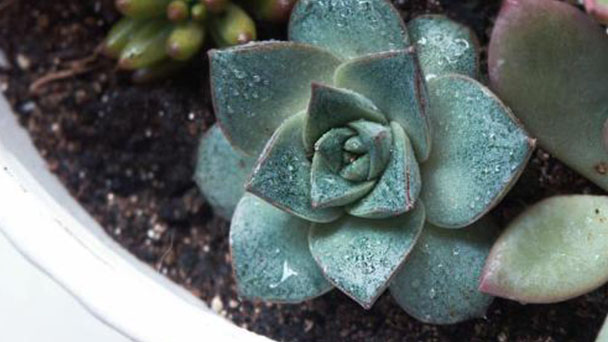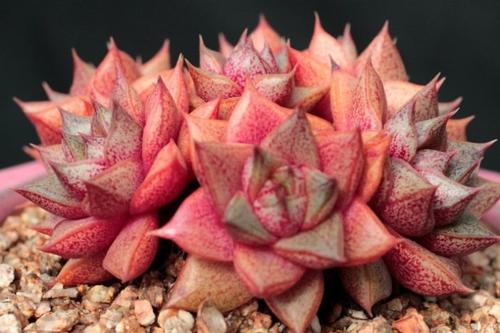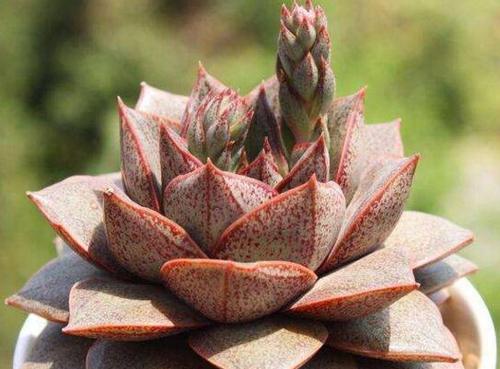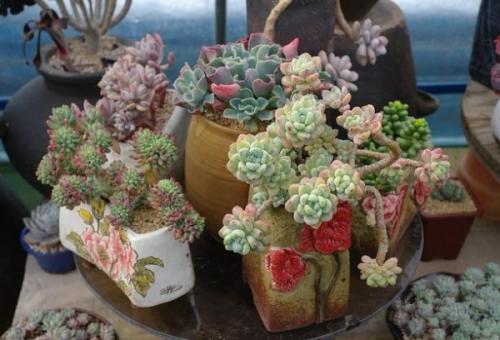How to grow Urbinia purpusii Rose
Written by Maggie
Jan 12 2021

In the process of propagating Urbinia Purpusii Rose, a mixture of perlite, sandy and saprolite soil was first selected as the substrate. Before the upper basin, put some bone powder or grass ash on the bottom of the basin as base fertilizer. During the curing period, put the plants in astigmatism, and control the temperature at about 16 ~ 26℃. Water to keep the basin dry.

1. Urbinia Purpusii Rose breeding Method
1. Soil management
Urbinia purpusii Rose has a long life and requires a high matrix during its growth. It likes to grow in porous soil with good porosity and strong drainage. Perlite, sandy soil and rotted leaf soil can be used as the substrate for general cultivation. Before cultivation, put some bone meal or grass ash in the bottom of the basin to serve as long-term basal fertilizer.
2. Lighting treatment
Like other succulents, Urbinia Purpusii Rose grows faster in sunny conditions. However, proper scattering of sunlight can promote the growth and development of the plants, and the plants can be placed in a place with good ventilation during the growth period. During the maintenance period, the temperature is controlled at about 16 ~ 26℃. In winter, when the temperature is lower than 10℃, it is necessary to enter the room for maintenance.
3. Waterless
Water environment is one of urbinia purpusii Rose farming methods and considerations. Urbinia Purpusii Rose is a succulent root plant, which contains a large amount of water and is highly drought-tolerant. Even if it is not watered for several days, it will not wither and die. But in the growing season, master the principle of not irrigating, watering is irrigating.

4. Fertilize regularly
For Urbinia Purpusii Rose to bloom normally, fertilizer supplies are essential. Fertilizer should be applied once a month during the growth period, mainly liquid fertilizer which is fully matured. The growth rate of the root system is slow during the high temperature in summer, and fertilization should be stopped. At the same time, each fertilization should be poured into a small amount of water, to dilute the concentration.
Matters needing attention when breeding Urbinia Purpusii Rose
Urbinia Purpusii Rose has a certain cold tolerance, but it should not be kept outside for a long time in winter, otherwise it will cause slow growth of branches and leaves, and there may be yellow leaves. In winter, the water can be cut off, and we can not lead to soil too wet. In addition, do a good job of preventing cold when the temperature is below 5℃.

Latest Updated
- Benefits of Bugleweed - 7 Science-backed Health Benefits
- Bugleweed Dangers & Side Effects - Is It Poisonous?
- How to Plant Evergreen Trees - What You Should Know
- When to Plant Evergreens - Grow Guide for Evergreen Trees
- 12 Wonderful Evergreen Shrubs for Your Garden
- 12 Popular Evergreen Plants with Pictures for Beginners
- When And How To Prune A Lilac Bush Like a Pro
- How to Grow & Care for Lilac Vine (Hardenbergia Violacea)
- Japanese Lilac Tree (Syringa Reticulata) Care & Propagation Guide
- Shumard Oak Pros and Cons - What to Know
Popular Articles
- Winter maintenance of Antirrhinum Majus
- How to Grow Terminalia Mantaly Tree
- How to Grow and Care for Crossostephium Chinense
- How to grow Antirrhinum Majus in spring
- Peristeria Elata (Dove Orchid) Profile: Info & Care Guide
- Underwatered Snake Plant (Sansevieria Trifasciata) - Signs And How To Fix
- How to Care for Brazilian Jasmine Plant (Mandevilla Sanderi)
- How to Grow & Care for Graptopetalum Purple Delight in Summer
- Rosa Chinensis (China Rose): Plant Growing & Care Tips
- How to Care for Baby Sun Rose (Aptenia Cordifolia)